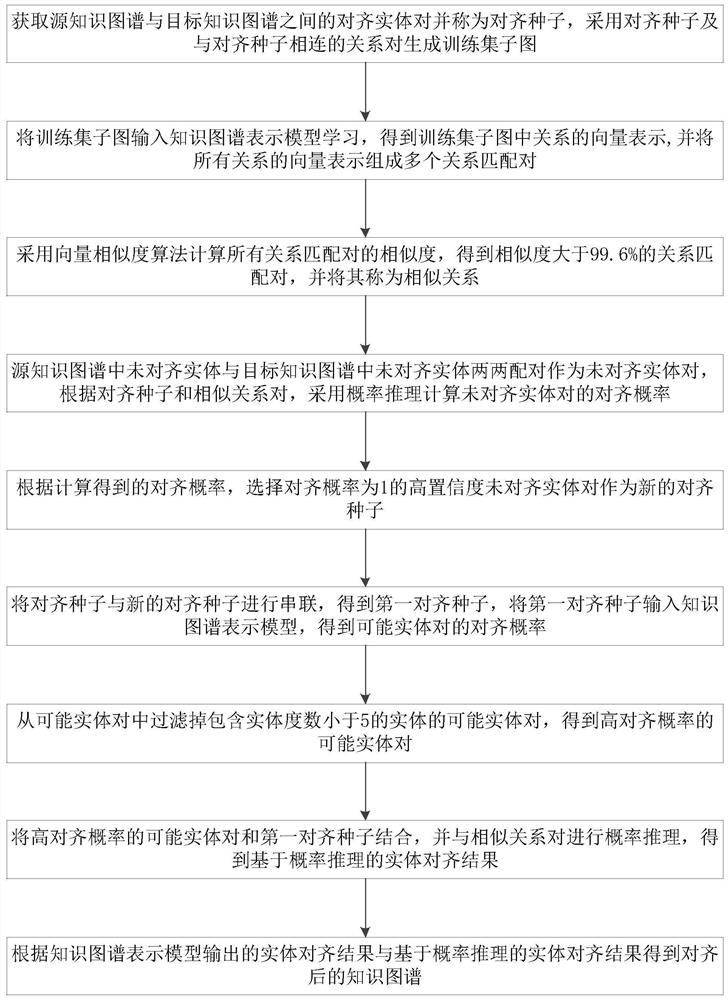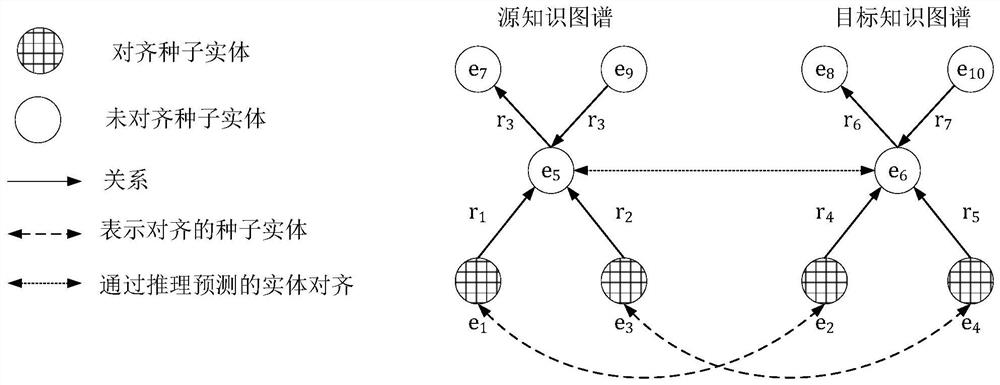Knowledge graph entity alignment method based on similarity relationship probability reasoning
A knowledge graph and probabilistic reasoning technology, applied in the fields of artificial intelligence and natural language processing, can solve problems such as no distinction, poor alignment, and failure of the probabilistic reasoning system to reduce errors and improve efficiency
- Summary
- Abstract
- Description
- Claims
- Application Information
AI Technical Summary
Problems solved by technology
Method used
Image
Examples
Embodiment Construction
[0050] The following will clearly and completely describe the technical solutions in the embodiments of the present invention with reference to the accompanying drawings in the embodiments of the present invention. Obviously, the described embodiments are only some, not all, embodiments of the present invention. Based on the embodiments of the present invention, all other embodiments obtained by persons of ordinary skill in the art without making creative efforts belong to the protection scope of the present invention.
[0051] A knowledge graph entity alignment method based on similarity relations and probabilistic reasoning, such as figure 1 shown, including the following steps:
[0052] S1. Obtain the alignment entity pair between the source knowledge graph and the target knowledge graph, which is called the alignment seed, and use the alignment seed and the relationship pair connected to the alignment seed to generate a training set subgraph;
[0053] S2. Input the traini...
PUM
 Login to View More
Login to View More Abstract
Description
Claims
Application Information
 Login to View More
Login to View More - R&D
- Intellectual Property
- Life Sciences
- Materials
- Tech Scout
- Unparalleled Data Quality
- Higher Quality Content
- 60% Fewer Hallucinations
Browse by: Latest US Patents, China's latest patents, Technical Efficacy Thesaurus, Application Domain, Technology Topic, Popular Technical Reports.
© 2025 PatSnap. All rights reserved.Legal|Privacy policy|Modern Slavery Act Transparency Statement|Sitemap|About US| Contact US: help@patsnap.com



